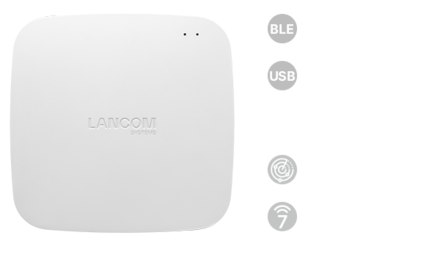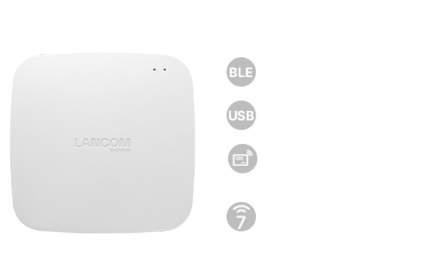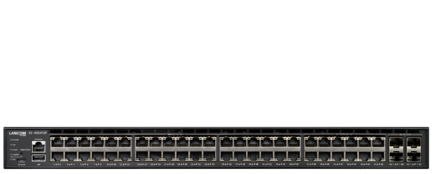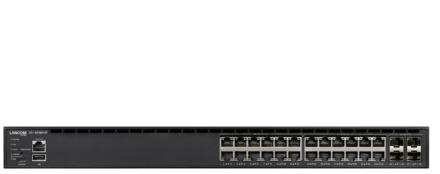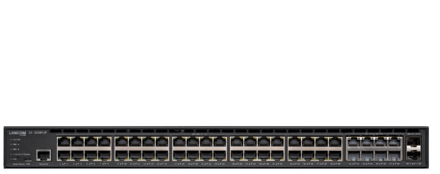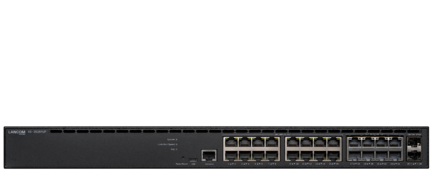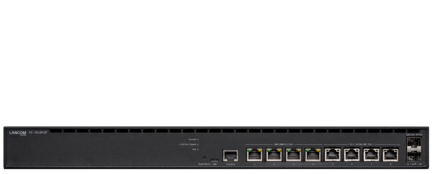What is Wi-Fi 7?
The new WLAN standard Wi-Fi 7, aka IEEE 802.11be, impresses with higher data densities, larger channel widths, impressive speeds, and innovative functions such as multi-link operation and multi-RU & puncturing. Wi-Fi 7 thus provides the basis for immersive user experiences and sophisticated future technologies based on the WLAN-exclusive 6 GHz frequency band. Find out what is behind Wi-Fi 7 technology in detail and which applications are possible with Wi-Fi 7.
6 GHz frequency band
Like Wi-Fi 6E, Wi-Fi 7 uses the 6 GHz frequency band in addition to the 2.4 and 5 GHz bands. While the 2.4 and 5 GHz bands can be used by other wireless technologies or primary users, such as baby monitors and microwaves, the high-frequency 6 GHz spectrum is intended for exclusive Wi-Fi use. This enables interference-free Wi-Fi connections with minimal latency and maximum data throughput. Fast-response connections and time-critical WLAN applications in particular benefit from this.
This promises a rapidly increasing spread of WLAN end devices that support the 6 GHz band.
Wi-Fi 7 for more data speed
Under ideal conditions, Wi-Fi 7 achieves up to 480% higher speeds compared to Wi-Fi 6(E) with a 16x16 MU-MIMO system! In practice, with 4x4 or 2x2 MIMO it is 240%.

QAM (quadrature amplitude modulation) is a modulation method that increases the information density during transmission processes. The higher the QAM level, the higher the throughput. While Wi-Fi 6(E) still relied on QAM-1024 (10 bits/symbol), Wi-Fi 7 enables 12 bits per symbol, i.e. QAM-4096 / 4k QAM. This alone provides a speed advantage of 20 percent!

With Wi-Fi 7, a doubled channel width of 320 MHz can be used, which doubles the transmission speed for individual devices. However, it should be noted that only 480 MHz of the total 1,200 MHz spectrum has been approved for use of the 6 GHz frequency in the EU to date. This means that only one 320 MHz channel can exist in its own radio field without interference.
Reliable parallel radio with multi-link operation (MLO)
Wi-Fi 7 makes it possible for access points and wireless clients to be connected simultaneously on two frequency bands for the first time. This has different advantages depending on the Wi-Fi client and the number of radio modules available:

Enhanced multi-link single-radio (sMLSR)
WLAN clients with a radio module can automatically switch between the better quality frequency bands available, which ensures fewer connection interruptions and therefore more stable, consistent WLAN connectivity, especially in radio environments with high signal density.

Multi-link multi-radio (MLMR)
For WLAN clients with more than one built-in radio module, the frequency bands can be used simultaneously, e.g. to send redundant data packets. This eliminates the need to switch between 2.4, 5, and 6 GHz radio bands and also increases the stability of the Wi-Fi network.

With previous Wi-Fi standards, interference from competing Wi-Fi networks, such as narrowband sources of interference, meant that the entire channel was occupied and could therefore no longer be used. With Wi-Fi 7 and the possibility of splitting into several sub-channels, this interference only affects a fraction of the available spectrum, which means that even very wide Wi-Fi channels (160 or 320 MHz) can be used productively under normal environmental conditions.
This is achieved by simply puncturing the spectrum, in which the channel is divided into sub-channels, so-called "resource units" or "RUs" (similar to OFDMA in Wi-Fi 6). With puncturing, the disturbed spectrum or sub-channel is automatically cut out in order to continue using the surrounding undisturbed spectrum.
|
Wi-Fi 6 |
Wi-Fi 6E |
Wi-Fi 7 |
|
|---|---|---|---|
|
Max. throughput (gross) |
9,6 Gbps |
9,6 Gbps |
46 Gbps |
|
Frequency bands |
2.4 & 5 GHz |
2.4, 5 & 6 GHz |
2.4, 5, and 6 GHz |
|
Modulation |
QAM-1024 |
QAM-1024 |
QAM-4096 |
|
Supported channel bandwidth |
20, 40, 80 & 160 MHz |
20, 40, 80 & 160 MHz |
20, 40, 80, 160 & 320 MHz |
|
MIMO |
8x8 MU-MIMO |
8x8 MU-MIMO |
8x8 MU-MIMO |
|
Multi?link operation |
– |
– |
Yes |
|
Resource units |
One RU per client |
One RU per client |
Multiple RUs per client |
Technical requirements for Wi-Fi 7 infrastructures
Depending on the network configuration, the speed, stability, and latency of the WLAN infrastructure can be decisive quality factors. When switching to the next Wi-Fi generation, the following requirements for the installed network components must be taken into account during planning and implementation in order to exploit the full potential of Wi-Fi 7.
Radio coverage for 6 GHz
Wi-Fi 7, like Wi-Fi 6E, shows its advantages in the WLAN-exclusive 6 GHz frequency band. However, a higher transmission frequency means a lower range. Compared to 5 GHz with Wi-Fi 6, you should therefore take the lower radio coverage into account. In concrete terms, this means that you may need to increase the number of access points required to ensure ideal Wi-Fi coverage. We therefore recommend a coverage service before implementation. LANCOM offers the LANCOM WLAN Survey Service for this purpose.
Wi-Fi 7-compatible end devices
Even if it seems self-explanatory: Wi-Fi 7-capable access points can only supply Wi-Fi 7 to wireless clients if their radio modules already support Wi-Fi 7. As Wi-Fi 7, like its predecessor standards, is fully backwards compatible, operation is possible without any problems, but you will not achieve the full strength of Wi-Fi 7, especially in terms of network stability. You should take this into account when purchasing smartphones and notebooks, for example.
Powerful switches
Wi-Fi 7 requires considerably higher bandwidths on the LAN side than Wi-Fi 6(E) and therefore places more demands on the network infrastructure. LAN components such as access switches require sufficient port capacity, including 10 GE and 2.5 GE ports, so that the Wi-Fi 7 transmission speeds can be realized. Due to the associated uplink performance of 25G or 100G, powerful aggregation and core switches may also be required. With a power supply via Power over Ethernet (PoE), PoE power in accordance with IEEE 802.3bt is required to ideally supply Wi-Fi 7 access points.
Wi-Fi 7 in the retail sector
Data-intensive, time-critical digital services at the Point of Sale (PoS) in the retail sector require not only high bandwidth, but also fast response times and maximum reliability – exactly what Wi-Fi 7 delivers! Customer smartphones and personalized services, supported by data mining, AI, and machine learning, create an immersive shopping experience with Wi-Fi 7. Contactless payment or Scan & Go become even more efficient. Business processes can be further optimized through the evaluation of real data on customer flows, product inventory, and advertising displays. In addition, Wi-Fi 7 ensures reliable monitoring of warehouse and logistics systems in connected logistics, even during business- and time-critical data transmissions.
For practical use in retail, powerful access points such as the LANCOM LX-7200E are available, specifically designed to meet these requirements.

Wi-Fi 7 in the healthcare sector
Wi-Fi 7 is the solution for the growing bandwidth requirements in the healthcare sector. Digitized work processes in nursing homes, surgeries, pharmacies, clinics, and outpatient care services require not only responsive but also fail-safe data exchange. Telemedicine and remote patient monitoring are just two areas of application for Wi-Fi 7. The introduction of the electronic patient record (ePA) reinforces the need for Wi-Fi 7, as it gives patients and authorized healthcare providers secure and fast access to important health data.
Wi-Fi 7 in the public sector
Wi-Fi 7 plays a key role in the public sector for optimizing services and promoting citizen participation. In public institutions with a high user density such as schools, libraries and administrative buildings, a reliable Wi-Fi 7 network enables fast access to digital learning materials and facilitates access to data-intensive services (augmented and virtual reality (AR, VR)). In addition, Wi-Fi 7 improves the efficiency of administrative processes through reliable networking of urban facilities. Smart city solutions, such as intelligent traffic control and environmentally friendly energy monitoring, also benefit from the powerful Wi-Fi 7 technology.
White Paper Wi-Fi 7
You can find all the information clearly and compactly summarized in the White Paper Wi-Fi 7.






